Avoiding Duplicate Reporting
When reporting accomplishments in IDIS, it is important to avoid double counting. An accomplishment may be double-counted by reporting it for more than one activity or by incorrectly reporting accomplishments within an individual activity.
Within an individual activity, duplicate reporting is most likely to occur on the MA04 screen, most often for multi-year activities. On the MA04 screen, report proposed accomplishments in the first year of a multi-year activity. If the number of proposed accomplishments increases during subsequent years due to the addition of funds or due to other circumstances, the additional proposed accomplishments should be reported in the year in which the increase was identified. Report actual accomplishments achieved during each program year. Report an accomplishment only one time. Do not report an accomplishment that has previously been reported in another program year. All other screens ask for cumulative accomplishment data and, therefore, are not as prone to duplicate entries.
Use the following examples as guides to correctly report accomplishments on the MA04 screen. The first example depicts a housing rehabilitation activity begun in program year 1998 in which 20 housing units were to be rehabilitated. In 2000, the grantee determined that four additional housing units could be rehabilitated due to cost underruns. Ten housing units were completed in 1998, six in 1999, and eight in 2000. The final draw was made during program year 2001. The MA04 screen should be filled out as follows: for PY 1998, the MA04 screen shows twenty proposed housing units and ten units completed; for PY 1999, the MA04 screen shows zero proposed housing units and six units completed; for PY 2000, the MA04 screen shows four proposed units and eight units completed; and, for PY 2001, the MA04 screen shows no proposed or actual units since all units had been completed and reported in previous years.
NOTE: Dates appearing in the upper left hand corner of the IDIS screens used in the examples contained in these guidelines are the dates the screens were printed and should be ignored.
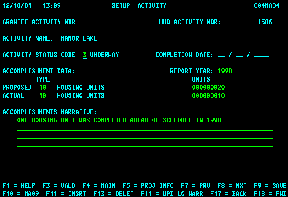
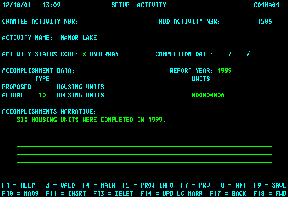
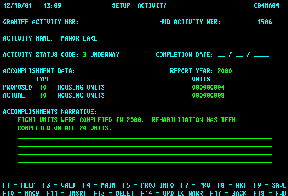
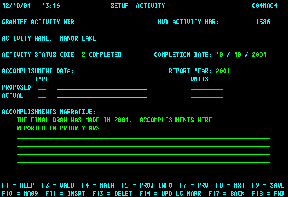
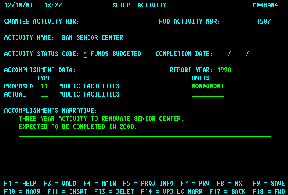 The next example depicts the reporting of accomplishments on the MA04 screen for a public facility improvement activity. Begun in program year 1998, rehabilitation of the SAM Senior Center in Anytown, Ohio was completed in PY 2000. The MA04 screen should be filled out as follows: for PY 1998, the proposed accomplishment is one Public Facility and actual accomplishment is zero; for PY 1999, both proposed and actual accomplishments are zero; and, for PY 2000, the proposed accomplishment is zero, and the actual accomplishment should be recorded as one Public Facility.
The next example depicts the reporting of accomplishments on the MA04 screen for a public facility improvement activity. Begun in program year 1998, rehabilitation of the SAM Senior Center in Anytown, Ohio was completed in PY 2000. The MA04 screen should be filled out as follows: for PY 1998, the proposed accomplishment is one Public Facility and actual accomplishment is zero; for PY 1999, both proposed and actual accomplishments are zero; and, for PY 2000, the proposed accomplishment is zero, and the actual accomplishment should be recorded as one Public Facility.
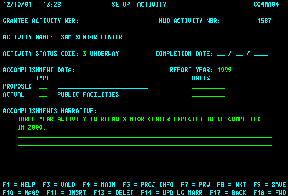
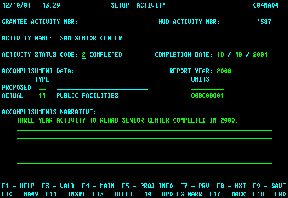
If a grantee sets up separate activities for activity delivery costs associated with carrying out CDBG-assisted activities, particularly housing rehabilitation and economic development activities, duplication in reporting accomplishments will occur if grantees report accomplishments for both activity delivery and the activity actually providing the assistance. When activity delivery costs support another CDBG-assisted activity, the grantee should report proposed and actual accomplishments only for the activity that is actually providing the assistance. No accomplishments should be reported for the activity set up to track activity delivery costs. It should be noted that many grantees do not set up separate activities for activity delivery costs, instead, including those costs in the activity that is actually providing the assistance. This method of setting up activities reduces the risk of double counting accomplishments; however, both methods are acceptable.
When CDBG-funded activities undertaking actual housing rehabilitation are coded 14A-D, 14F, 14G, and 14I, and the activity delivery costs for those activities are reported separately using 14H as the matrix code, only report accomplishments for those activities in which the actual rehabilitation is taking place as shown in the example below.
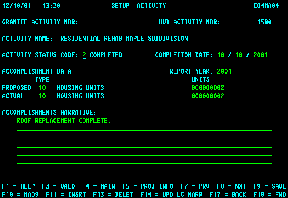
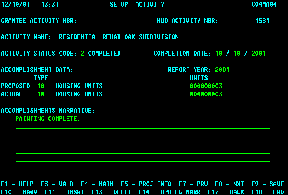
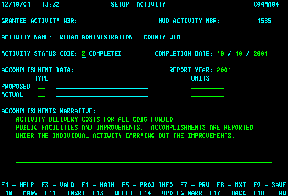
When CDBG funds are used only for the activity delivery costs of housing rehabilitation activities, and other funds, such as a city's General Fund or HOME funds, are used to actually carry out the rehab, accomplishments should then be reported under 14H, Housing Rehabilitation Administration. In this case, the number of housing units reported would not be duplicated by another CDBG activity since the activity delivery reflects the total CDBG contribution to the housing rehabilitation project.
Content Archived: April 29, 2011